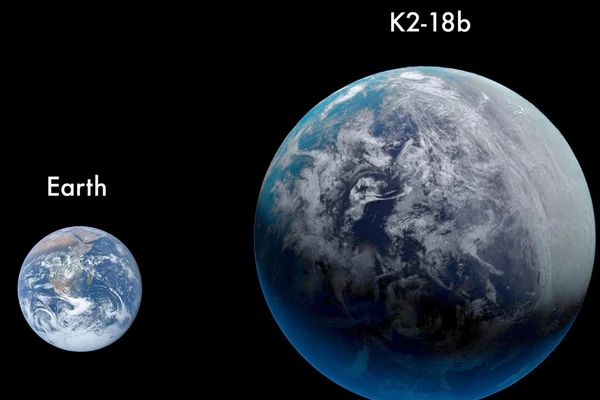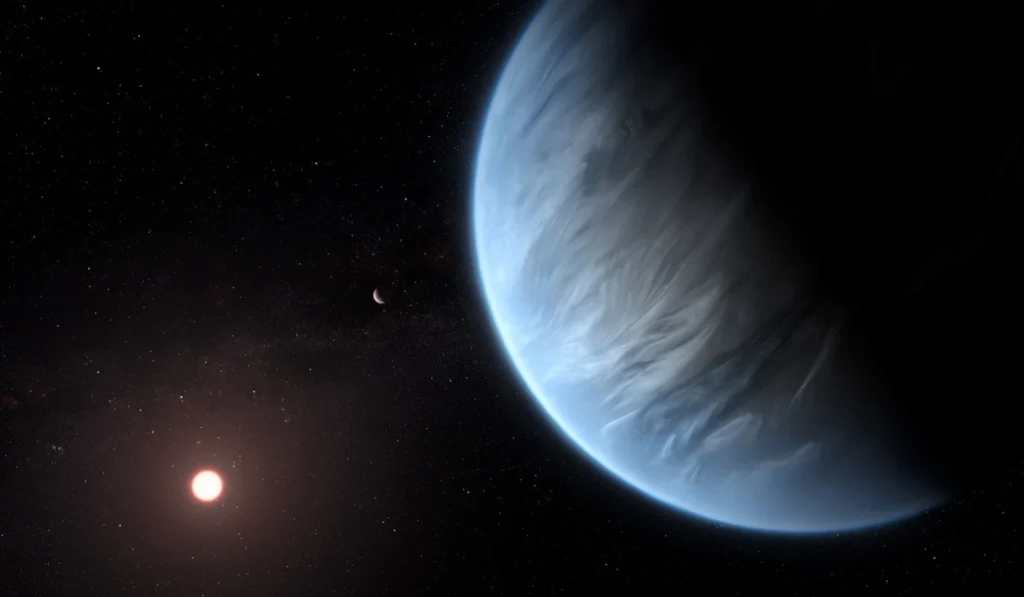Data from the James Webb Telescope indicates a high probability of Dimethyl Sulphide (DMS) gas on K2-18b, a gas typically produced by living beings on Earth.
About K2-18b:
- K2-18b was discovered in 2015.
- It is classified as a super Earth and a Mini-Neptune due to its size, which is about eight times the mass of Earth.
- It is also described as a Hycean planet—a hot, water-covered planet with a hydrogen-rich atmosphere.
Orbital Characteristics:
- K2-18b orbits an M-type star, also known as a red dwarf, named K2-18.
- The planet is situated in the Goldilocks zone, where temperatures are just right for liquid water to exist.
Environmental Features:
- In 2019, scientists discovered water vapor in K2-18b’s atmosphere.
- This planet has characteristics more akin to gas giants like Uranus or Neptune, rather than being a rocky planet like Earth.
Proximity and Observational Data:
- K2-18b is located approximately 124 light-years away from Earth.
- Observations from telescopes like the James Webb have contributed significantly to our understanding of its atmosphere and potential habitability.
Ref: Source
| UPSC IAS Preparation Resources | |
| Current Affairs Analysis | Topperspedia |
| GS Shots | Simply Explained |
| Daily Flash Cards | Daily Quiz |



